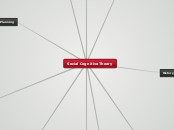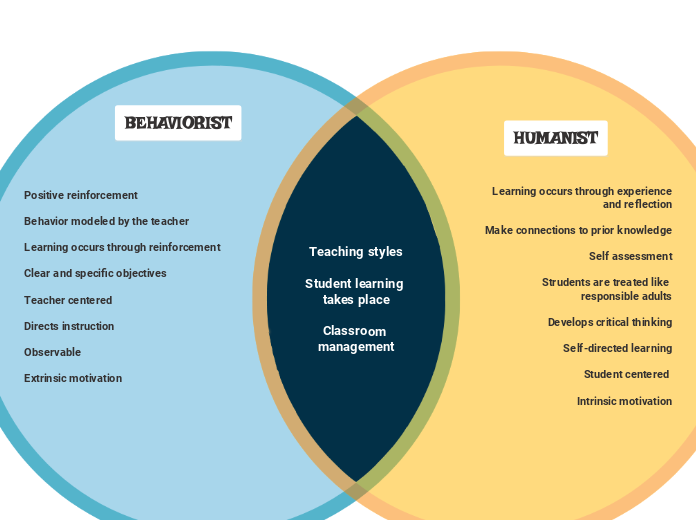Social Cognitive Theory
Technology
Using Technology to Promote Self Regulated Learning
student-centered activities such as computer programs,
are likely to support intrinsically
motivated behavior on the part of students. As
evidence of this, teachers reported that during
Alien Rescue, students stayed engaged
throughout the three-week program and were
rarely off task, and behavior
problems decreased. Several teachers
also noted that students who are typically unmotivated
during science were more motivated
than usual.
Programs such as Exploring
the Nardoo (Hedberg, 1997), Decision Point
(Brush & Saye, 2000), and Rescuing Rocky
(Barab, Hay & Duffy, 2000) make use of the
capabilities of technology to promote a variety
of activities typical of student-centered learning,
such as experimentation, research, design, and
solution development.
Computer based programs that include models can improve student's problem solving skills. Students that are provided with video segments of an expert modeling a skill or an activity are able to succeed in repeating the same task. Research has shown that watching a computer based model, even an animated one, produces better learning and transfer of problem solving skills than watching no model.
Supporting Research and Major Proponents
Support of Computer-Based Modeling: Watching a computer based model produces better learning and transfer of problem solving skills, as well as increases engagement and motivation.
Liu & Petersen, 2002
Support for Reciprocal Teaching: Students taught a multicomponent strategy (summarize, question, clarify, predict) scored higher on reading comprehension exams than students given standard reading instruction.
Alfassi, 1998; C.J. Carter, 1997; Kim, Baylor, & PALS Group, 2006; Rosenshine & Meister, 1994
Support for Strategy Teaching: Lower grade students who were taught self-regulating writing strategies and observed classmates implement the strategies write better essays than students who received traditional writing instruction.
Glaser & Brunstein, 2007; K.R. Harris, Graham, & Manson, 2006; Graham & Perin, 2007
Support for Peer Modeling: Middle school students who watched their peers solve math problems achieved higher on a math exam with similar problems and had higher ratings of self efficacy than did students who watched adults model math problems.
Schunk & Hanson, 1985; Schunk, Hanson, & Cox, 1897
Support for Triadic Reciprocal Causation: Self efficacy, epistemological beliefs, and self-regulation processes are positively related to achievement.
Lodewyk, 2007; Lodewyk & Winne, 2005; Schommer-Aikins, Duell, & Hutter, 2005; Swakabder & Taube, 2007; Trautwein & Ludtke, 2007; Usher & Pajares, 2008
Utilization in Contemporary Education
Reciprocal Teaching
Teachers and students collaborate in learning and practicing four key skills: summarizing, questioning, clarifying, and predicting. The teacher's role in the process is reduced over time.
A teacher or more advanced peer helps to structure or arrange a task so that a novice can work on it successfully.
Providing Feedback
A teacher provides student with feedback, or information with which a learner can confirm, add to, overwrite, tune, or restructure information in memory, whether that information is domain knowledge, metacognitive knowledge, beliefs
about self and tasks, or cognitive tactics and strategies.
Interactive Modeling
A teacher models positive behaviors, engages students in active learning, and immediately assesses their understanding.
Lesson Planning
Applying Social Cognitive Theory in the Classroom
Teach students how to formulate comprehension questions. Self questioning could be an effective comprehension tactic, if students are trained to write good comprehension questions and given opportunities to practice the technique.
Teach students how to use both memory-directed and comprehension directed tactics. Teach students how to use various forms of rehearsal and mnemonic devices. Maintenance rehearsal is a useful tactic for keeping a relatively small amount of information active in short-term memory. It is also one of a few tactics young children can learn to use. Remind young students that rehearsal is something that learners consciously decide to do when they want to remember things, and remind students to rehearse no more than seven items (or chunks) at a time.
Model self-regulating skills, including the standards you use to evaluate your performance and reinforce yourself. You can enhance the learning of SRL skills by having students observe and imitate what you and other skilled learners do. When you demonstrate a skill or process, you should first explain what you are going to do, then take time to describe why you are going to do it, and how you will evaluate the quality of your performance.
Emphasize how important self-regulating skills are to learning and when they should be used. When teaching planning skills, point out that students who are good planners know the conditions under which they learn best and choose or arrange environments that eliminate or decrease distractions. To raise students' awareness of the value of a good learning environment, you can have them keep a log of how much time they spend studying in various places and at various times, what internal and external distractions they experience and how they deal with those distractions.
Establish the foundation for self-regulated learning in kindergarten and primary grades. Becoming a proficient self-regulated learner requires systematic instruction and experience spread over many years. Teachers whose classrooms were rated as high SRL classrooms emphasized student choice of activities and supported meeting academic challenges (scaffolding).
Include the development of self-regulated learning skills in your objectives and lesson plans. Students should not be given responsibility for their learning without adequate preparation.
Helpful Links About Using the Strategies in the Classrom
Providing Students with Meaningful Feedback: https://www.edutopia.org/blog/tips-providing-students-meaningful-feedback-marianne-stenger
The Importance of Feedback: http://www.cdtl.nus.edu.sg/Ideas/iot407.htm
Scaffolding Tips for Teachers: https://www.edutopia.org/blog/scaffolding-lessons-six-strategies-rebecca-alber
Resources
Vygotsky, L. S. (1978). Mind in society: The development of higher psychological processes. Cambridge, MA: Harvard University Press.
What is Interactive Modeling? (2017). Retrieved March 19, 2017, from https://www.responsiveclassroom.org/what-is-interactive-modeling/
Social Learning Theory Bandura Social Learning Theory. (2016, September 14). Retrieved March 21, 2017, from https://www.learning-theories.com/social-learning-theory-bandura.html
Schaffer, R. (1996). Social development. Oxford: Blackwell.
Petersen, S., & Liu, M. (2002/2003). The transfer of problem-solving skills from a problem-based learning environment: The effect of modeling an expert's cognitive processes. Journal of Research on Technology in Education, 35(2), 303-320.
McLeod, S. A. (2014). Lev Vygotsky. Retrieved from www.simplypsychology.org/vygotsky.html
Alexander, P. A., Schallert, D. L., & Hare, V. C. (1991). Coming to terms: How researchers in learning and literacy talk about knowledge. Review of Educational Research, 61, 315-343.
History
Founding Fathers
Lev Vygotsky
Scaffolding
The use various instructional aids or scaffold can help students acquire knowledge and self-regulatory skills.
Zone of Proximal Development
The area where the most sensitive instruction or guidance should be given, thus allowing the child to develop skills they will then use on their own, developing higher mental functions.
Social Influences On Cognitive Development
The child attempts to understand and internalize the information provided by the skillful adult, the uses it as a guide to regulate their performance.
Cooperative Dialogue: Adults and peers model behaviors and sometimes provide verbal instructions for the child to internalize.
Crucial learning often occurs through interaction with others, especially a skillful adult.
Albert Bandura
Social Learning Theory
People learn from one another, via observation, imitation, and modeling. The theory has often been called a bridge between behaviorist and cognitive learning theories because it encompasses attention, memory, and motivation.
Reciprocal Determinism
Reciprocal determinism is described as, the world and a person’s behavior cause each other, while behaviorism essentially states that one’s environment causes one’s behavior. Bandura, who was studying adolescent aggression, found this too simplistic, and suggested that behavior causes environment as well. Later on, Bandura considered personality as an interaction between three components: the environment, behavior, and one’s psychological processes
Modeling Behavior
Necessary Conditions for Effective Modeling
Attention — various factors increase or decrease the amount of attention paid. Includes distinctiveness, affective valence, prevalence, complexity, functional value. One’s characteristics (e.g. sensory capacities, arousal level, perceptual set, past reinforcement) affect attention.
Retention — remembering what you paid attention to. Includes symbolic coding, mental images, cognitive organization, symbolic rehearsal, motor rehearsal.
Reproduction — reproducing the image. Including physical capabilities, and self-observation of reproduction.
Motivation — having a good reason to imitate. Includes motives such as past (i.e. traditional behaviorism), promised (imagined incentives) and vicarious (seeing and recalling the reinforced model).
"Most human behavior is learned observationally through modeling: from observing others, one forms an idea of how new behaviors are performed, and on later occasions this coded information serves as a guide for action" (Bandura).
Theory in Action
Learners pick up the major features of a skill or strategy, as well as performance standards, motivational beliefs, and values, by watching and listening as a model exhibits and explains the reasons for the behavior.
In this video, a child "models" a skillful adult on a media platform.
In this video, a child "models" his father's behavior.
Vygotsky's Theory of Cooperative Dialogue
As Sarah becomes more independent, her father allows her to work independently. This social interaction between Sarah and her father, a skillful adult, promotes Sarah's cognitive development. Evidently, he works with her in her zone of proximal development, providing scaffolding as needed.
Sarah is given her first jigsaw. She examines the pieces and begins to attempt to solve the puzzle, however, she is unsuccessful. Seeing her frustration, her father sits with her and describes and demonstrates some basic strategies, such as finding all the corner/edge pieces and provides a couple of pieces for Sarah to put together herself and offers encouragement when she does so.
Theory Explanation
What is the Social Cognitive Theory?
Social Cognitive theory focuses on the importance of learning through observation. We learn through social experiences in our environment. Through observation of others actions and behaviors we are able to gain new knowledge and learn to imitate those behaviors.
Key Terms Defined
Vicarious Reinforcement
The strengthening of a particular behavior in an observer who anticipates receiving a reward for the behavior because someone else has been rewarded.
Observational Learning
Modeling: The part of the triadic model of social cognitive theory that describes the role of observing and imitating the behavior of models in learning new capabilities
Learning Strategy
Learning Tactics: Specific techniques that a learner engages in to accomplish an immediate learning objective.
Comprehension Directed Tactics
Self-Questioning
A technique that uses comprehension aiding questions as well as recall questions to help students restate information. This process produces better recall and comprehension of material.
Concept Mapping
A technique that helps students identify, visually organize, and represent the relationships among a set of ideas.
Memory Directed Tactics
Mnemonic Device: tactic that helps a learner organize information to enhance retrieval
Keyword Method
Loci Method
Acrostic
Acronym
Rhyme
Rehearsal: Rehearsing a small set of items for several repetitions
A general plan that a learner formulates for achieving a somewhat distant academic goal.
Self-Efficacy
The degree to which people believe they are capable or prepared to handle particular tasks.
Self-Regulated Learning
The conscious and purposeful use of one's cognitive skills, feelings, and actions to maximize the learning of knowledge and skills for a given task and set of conditions.
Self-Regulation
The way by which individuals change their behaviors in order to achieve a desires goal in response to multiple forces without being prompted to do so.
Triadic Reciprocal Causation
Learned capabilities are the product of interactions among an individual's personal characteristics, behaviors, and social environment.
Triadic Reciprocal Causation Explained
Causation = produces learning
Reciprocal = the elements influence one another
Tri = 3 elements (personal characteristics, behavioral patterns, social environment)









